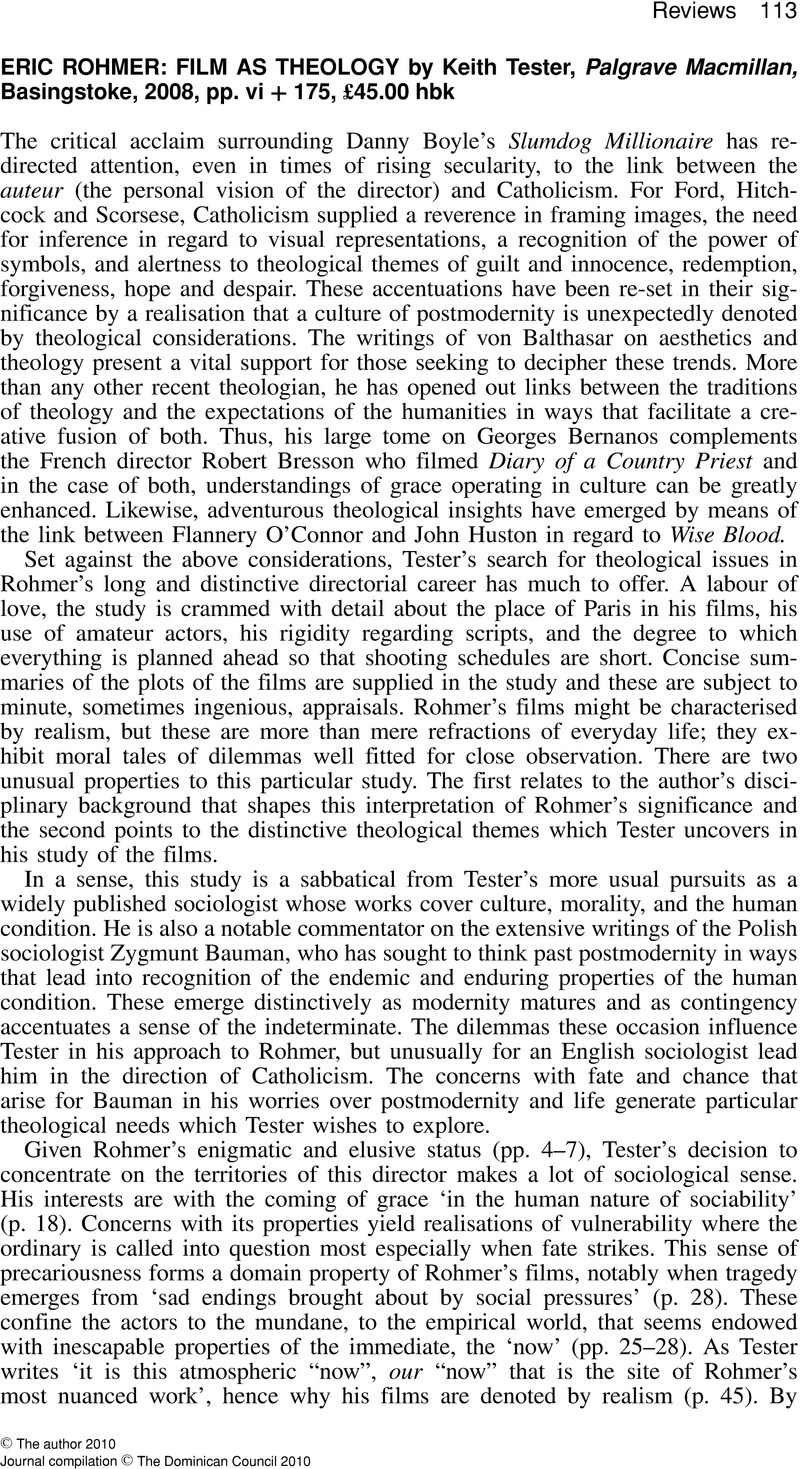No CrossRef data available.
Article contents
Eric Rohmer: Film as Theology by Keith Tester, Palgrave Macmillan, Basingstoke, 2008, pp. vi + 175, £45.00 hbk
Review products
Eric Rohmer: Film as Theology by Keith Tester, Palgrave Macmillan, Basingstoke, 2008, pp. vi + 175, £45.00 hbk
Published online by Cambridge University Press: 01 January 2024
Abstract
An abstract is not available for this content so a preview has been provided. Please use the Get access link above for information on how to access this content.

Information
- Type
- Reviews
- Information
- Copyright
- Copyright © The author 2010. Journal compilation © The Dominican Council 2010.

